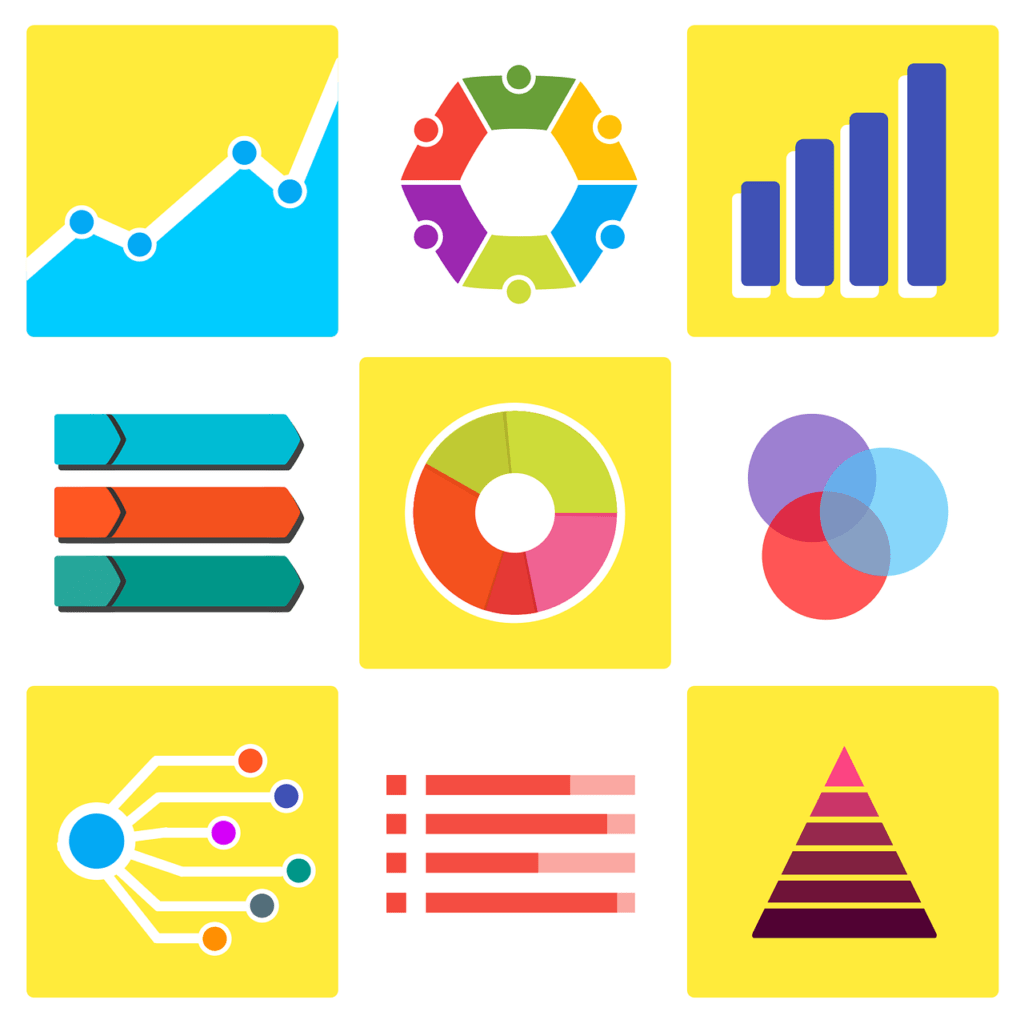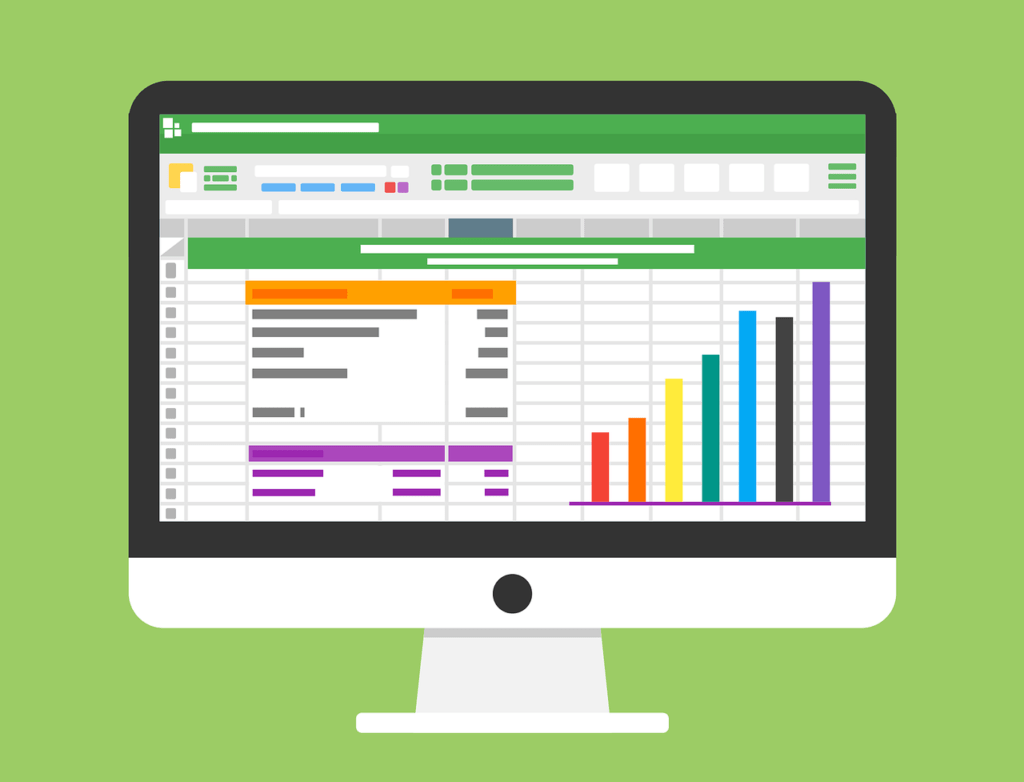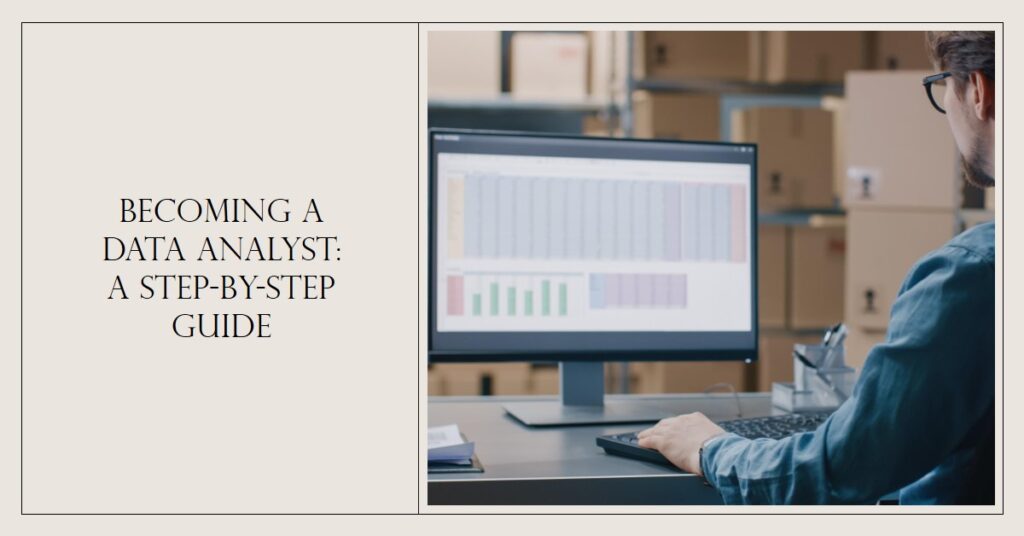- Introduction
- Get a Foundational Education
- Build Technical Skills
- Work on Real Data Projects
- Develop a Portfolio
- Practice Presenting Findings
- Secure an Entry-Level Data Analyst Job
- Consider Certification or Advanced Degree
- Conclusion
- Five Facts About How to Become a Data Analyst:
-
FAQs about How To Become A Data Analyst
- How can studying data help guide business decisions?
- What are some steps to becoming a data analyst?
- Can I become a data analyst without a bachelor's degree?
- What technical skills are important for a data analyst?
- How can I gain real world experience as a data analyst?
- Why is data-driven decision-making important and how can I contribute to it as a data analyst?
- Getting a foundational education is essential for becoming a data analyst. Pursue a degree or online courses that cover statistics, mathematics, and computer science.
- Building technical skills is crucial. Learn programming languages like Python, and familiarize yourself with data visualization tools and database management systems.
- Working on real data projects is important to gain hands-on experience. Seek opportunities to work with real datasets, analyze them, and derive insights.
- Developing a portfolio showcasing your data analysis projects is key. Create a portfolio website or use platforms like GitHub to demonstrate your skills and knowledge.
- Practice presenting findings to effectively communicate your insights. Develop your communication and storytelling skills to convey complex data analysis in a clear and understandable manner.
- Securing an entry-level data analyst job is a crucial step. Apply for internships or entry-level positions that allow you to continue learning and further develop your skills.
- Consider obtaining certification or an advanced degree to enhance your credentials. Professional certifications or a master’s degree in data analytics can provide a competitive edge.
- Conclusion: Becoming a data analyst requires a combination of education, technical skills, practical experience, and continuous learning. By following these steps, you can embark on a successful career in data analysis.
Introduction
Data Analysts play a crucial role in extracting valuable insights from data and turning them into actionable strategies. This article provides a comprehensive guide on how to become a data analyst, equipping individuals with the necessary skills and knowledge to excel in this field.
Delve into the world of data analysis and uncover the opportunities and potential it offers. Discover the essential steps and requirements to embark on a successful career as a data analyst. Unleash your analytical prowess and unlock a world of possibilities.
Get a Foundational Education
A solid foundation in education is essential for becoming a proficient data analyst. Acquiring foundational knowledge is crucial for developing analytical skills and understanding complex data sets. This education provides a strong base for data analysis techniques and statistical methodologies. By obtaining a sound educational background in relevant subjects such as mathematics, statistics, computer science, and data visualization, aspiring data analysts can gain the necessary knowledge and skills to excel in their field. Building a strong foundation through education is the first step towards a successful career as a data analyst.
Furthermore, pursuing a degree or certification program in data science or analytics can offer more specialized knowledge and practical training. These programs often cover topics like data mining, machine learning, programming languages, and database management systems. By immersing themselves in these subjects, individuals can gain a deeper understanding of data analysis techniques and learn how to apply them effectively.
Obtaining a foundational education also involves developing critical thinking and problem-solving skills. Data analysts need to approach problems analytically, identify patterns, and draw meaningful insights from large datasets. A solid education equips individuals with the necessary analytical mindset and problem-solving abilities to tackle complex data challenges.
Pro Tip: Aside from traditional education, aspiring data analysts can also benefit from self-learning and exploring online resources, such as interactive tutorials, online courses, and data analysis platforms. This continuous self-improvement allows for staying updated with the latest industry trends and honing analytical skills.
Build Technical Skills
To develop your technical skills as a data analyst, you can take the following steps:
- Invest your time in learning programming languages, such as Python and R, as they are widely used in data analysis.
- Master your knowledge of SQL, as it is essential for handling databases and querying data.
- Develop a strong understanding of data visualization techniques and tools, like Tableau or Power BI, to effectively communicate insights.
- Familiarize yourself with statistical analysis methods, including hypothesis testing, regression analysis, and machine learning algorithms.
- Gain hands-on experience with data manipulation and cleansing techniques to ensure the accuracy and quality of your analysis.
- Stay up-to-date with the latest advancements in data analysis tools and technologies through continuous learning and professional development.

In addition to these steps, it’s crucial to practice applying your technical skills to real-world datasets. This practical experience will not only reinforce your knowledge but also help you tackle new challenges efficiently.
To further enhance your growth as a data analyst, consider seeking mentorship or joining online communities where you can collaborate with like-minded professionals. Embracing a growth mindset and actively seeking feedback will enable you to continuously improve your technical skills and excel in the field of data analysis.
Work on Real Data Projects
Working on Authentic Data Projects:
Utilize real data to enhance your skills as a data analyst.
- Apply your analytical expertise to real-world scenarios and gain practical experience.
- Interpret and analyze data sets, uncovering valuable insights for decision-making purposes.
- Handle complex data sources, ensuring accuracy and reliability in your analysis.
- Create and implement data-driven strategies and solutions based on real data.
- Collaborate with professionals from various domains, leveraging their expertise and perspectives.
- Showcase your ability to handle real data projects, enhancing your credibility as a data analyst.
In addition, broaden your horizons by delving into diverse data sets, such as those from different industries or global sources. Embrace the challenge of working with unfamiliar data, applying your skills to uncover valuable insights.
To excel in working on real data projects, consider the following suggestions:
- Stay up-to-date with the latest data analysis techniques and tools to effectively navigate the complexities of real-world data.
- Collaborate with domain experts to gain a deeper understanding of the data context and uncover hidden patterns or trends.
- Practice data cleaning and manipulation techniques to ensure data quality and suitability for analysis.
- Enhance your communication skills to effectively convey your findings and insights to stakeholders.
- Seek feedback and incorporate it into your analysis processes, fostering continuous improvement.
- Emphasize the importance of ethical data handling and privacy, ensuring compliance with regulations and guidelines.
By following these suggestions, you’ll sharpen your analytical skills while gaining valuable experience in working with real data projects.
Develop a Portfolio
Developing an Impressive Data Analyst Portfolio
Becoming a successful data analyst requires more than just technical skills. Developing a strong portfolio is crucial for showcasing your expertise and standing out from the competition. Here’s a step-by-step guide to help you build an impressive data analyst portfolio:
- Understand your target audience – Tailor your portfolio to the specific industry or company you’re interested in. Carefully research their needs and highlight projects that align with their requirements.
- Choose relevant projects – Select projects that demonstrate a wide range of skills and showcase your ability to analyze and interpret data effectively. Include projects that resulted in tangible outcomes or significant improvements.
- Showcase your methodology – Explain your approach and methodology for each project. Highlight any innovative techniques or tools you used to analyze data and derive insights. Use visuals, such as graphs and charts, to present your findings in a clear and compelling manner.
- Include your technical skills – Provide a comprehensive list of the programming languages, analysis tools, and software you are proficient in. It’s important to demonstrate your ability to work with different technologies commonly used in the field.
- Keep it visually appealing – Design your portfolio in a clean and professional manner. Use attention-grabbing visuals, consistent formatting, and an easy-to-navigate structure. Consider creating an online portfolio that allows potential employers to easily access and review your work.
Remember, developing an impressive data analyst portfolio is an ongoing process. Continuously update and refine your portfolio as you gain new skills and complete more projects.
Pro Tip: Don’t just focus on the quantity of projects in your portfolio, but also emphasize the quality and the impact they have made. Employers value a few exceptional projects more than a long list of mediocre ones.

Practice Presenting Findings
Text: Practice Presenting Findings is crucial for data analysts to effectively communicate their insights. Here’s a 6-step guide to hone this skill:
- Organize your findings: Start by structuring your results in a clear and logical manner.
- Highlight key insights: Identify the most important findings and present them succinctly.
- Visualize the data: Utilize graphs, charts, and visuals to make your findings easier to understand and remember.
- Adapt to your audience: Tailor your presentation to the knowledge level and interests of your audience.
- Practice delivery: Rehearse your presentation to ensure a confident and engaging delivery.
- Solicit feedback: Gather input from colleagues or mentors to further improve your presentation skills.
In addition, it’s important to remember that effective practice presenting findings requires attention to detail and a focus on clarity. By following this guide, you can effectively communicate insights and make a strong impact.
Pro Tip: Consider recording your practice presentations to review your performance and identify areas for improvement.
Secure an Entry-Level Data Analyst Job
To secure an entry-level data analyst job, it is essential to follow a few crucial steps.
- Firstly, gaining a strong foundation in data analysis techniques, such as statistical analysis and data visualization, is vital.
- Additionally, acquiring proficiency in relevant software tools like Excel, SQL, and Python can significantly boost your chances of getting hired.
- Moreover, obtaining a relevant degree or certification in data analysis or a related field can provide you with the necessary knowledge and credentials.
- Finally, gaining practical experience through internships, projects, or freelance work can showcase your skills and make you a competitive candidate.
By following these suggestions, you can increase your chances of securing your desired entry-level data analyst job.
Consider Certification or Advanced Degree
Certification or Advanced Degree Consideration for Data Analysts
Pursuing Certification or an Advanced Degree can greatly enhance your prospects as a data analyst. Here are the reasons why you should consider this avenue:
- Expertise: Certification or an advanced degree provides in-depth knowledge and specialized skills that are highly valued in the field of data analysis.
- Competitive Advantage: Obtaining certification or an advanced degree sets you apart from other candidates, making you a more desirable candidate for employers.
- Career Advancement: With certification or an advanced degree, you are more likely to be considered for promotions and leadership positions within your organization.
- Network Growth: Certification programs and advanced degree courses introduce you to a network of professionals in the field, enabling valuable connections and opportunities for collaboration.
- Industry Recognition: Certification demonstrates your commitment to maintaining high standards of professionalism and competence, earning you recognition among peers and potential employers.
- Continuous Learning: Pursuing certification or an advanced degree ensures that you stay updated with the latest trends and advancements in the field of data analysis.
By considering a certification or advanced degree, you equip yourself with the necessary knowledge and skills to excel in the field of data analysis. Don’t miss out on the chance to enhance your career prospects and stay ahead of the competition.
Join the ranks of successful data analysts by taking the next step towards certification or an advanced degree. Don’t let the fear of missing out hold you back – seize the opportunity to unlock your full potential in this rapidly evolving field.
Conclusion
As we come to the end of our exploration, we can establish that becoming a data analyst requires specific skills and knowledge in data analysis techniques. The field of data analysis offers a wide range of exciting opportunities for individuals interested in working with data.
By acquiring expertise in statistical analysis, data visualization, and programming languages such as Python or R, one can pave the way to a successful career in this field. Additionally, staying updated with the latest trends and technologies in the industry is crucial for continuous growth as a data analyst.
Five Facts About How to Become a Data Analyst:

- ✅ Getting a foundational education is one of the first steps to becoming a data analyst. (Source: Team Research)
- ✅ Building technical skills, such as programming languages and visualization tools, is essential for a data analyst job. (Source: Team Research)
- ✅ Working on projects with real data helps develop practical skills and enhances a data analyst’s portfolio. (Source: Team Research)
- ✅ Developing a portfolio of projects that showcase data scraping, data cleaning, data visualization, and actionable insights is crucial for a data analyst job application. (Source: Team Research)
- ✅ Practice presenting findings effectively, as strong communication skills are important for data analysts to convey insights to non-technical stakeholders. (Source: Team Research)
FAQs about How To Become A Data Analyst
How can studying data help guide business decisions?
Data analysts gather, clean, and study data to help guide business decisions. By analyzing data, they can identify patterns, trends, and insights that can inform strategic choices, improve operational efficiency, and drive business growth.
What are some steps to becoming a data analyst?
To become a data analyst, you can follow these steps:
- Get a foundational education in data analytics.
- Build your technical skills in programming languages and visualization tools.
- Work on projects using real data to gain hands-on experience.
- Develop a portfolio showcasing your data analysis work.
- Practice presenting your findings to improve your communication skills.
- Apply for entry-level data analyst positions and gain real world experience.
Can I become a data analyst without a bachelor’s degree?
While many entry-level data analyst positions used to require a bachelor’s degree, the field is evolving. While a degree in math, computer science, or a related field can provide foundational knowledge, it is now possible to learn the necessary skills through alternative programs like professional certificate programs, bootcamps, or self-study courses.
What technical skills are important for a data analyst?
Some essential technical skills for a data analyst include proficiency in programming languages (such as Python or R), knowledge of data visualization tools (like Tableau or Power BI), experience with data cleaning and normalization, and the ability to analyze and draw insights from data using statistical techniques or machine learning algorithms.
How can I gain real world experience as a data analyst?
To gain real world experience as a data analyst, you can look for degree programs or courses that offer hands-on projects using real data sets. Additionally, you can explore free public data sets available online and design your own projects around them. Participating in group projects or internships can also provide valuable experience and showcase your ability to work collaboratively.
Why is data-driven decision-making important and how can I contribute to it as a data analyst?
Data-driven decision-making involves making strategic business decisions based on facts, data, and metrics rather than intuition or observation. It is important because it can lead to better customer acquisition, customer loyalty, and profitability for organizations. As a data analyst, you contribute to data-driven decision-making by analyzing data, extracting meaningful insights, and effectively communicating those insights to decision makers and stakeholders within the company.

A prominent SEO and Business Analyst with 5+ years of experience helping businesses achieve growth



